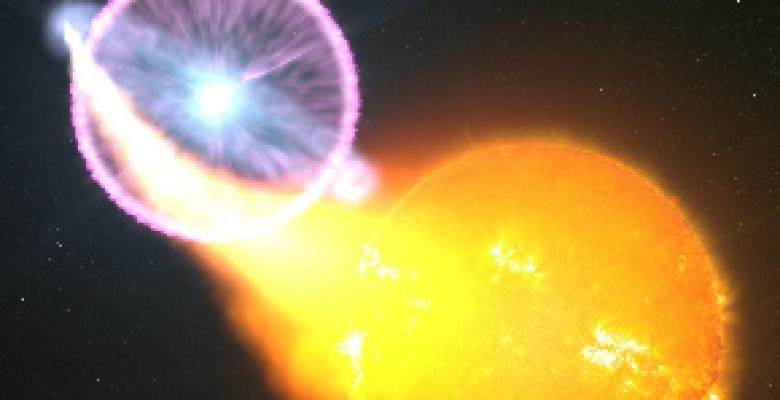The study, published this month in Nature Astronomy, explains that the brightness of luminous astronomical explosions known as classical novae is very likely caused by the collision of multiple waves of gaseous material being ejected at different speeds during the early stages of an explosion. The collision of those waves results in a powerful shockwave, producing a burst of heat and light – the stronger the shockwave, the brighter the burst.
"We realized several years ago that the bright gamma-ray emission from novae could only be understood if the shocks producing them were extremely powerful - so powerful that they must inevitably also be an important source of visual light,” said Columbia Astrophysicist Brian Metzger, who was part of the team that made the original prediction three years ago and is a co-author on the current paper. \"It’s fascinating to realize that although novae have been observed since antiquity, our understanding of what powers the light they produce is still evolving today."
At the end of its life, the Sun will expel its outer layers and leave behind a compact object about the size of the Earth called a “white dwarf,” Metzger explained. When a white dwarf is in a binary orbit with a normal star, the white dwarf can strip gas from the star and compile the matter onto its surface. A “classical nova” is the explosion that occurs – roughly once every 1,000 years – when a white dwarf accumulates enough hot gas on its surface for that matter to undergo a nuclear explosion. The nova explosion results in the ejection of hot gas into space, temporarily making the white dwarf appear more than a million times brighter. These luminous events are so bright that they can sometimes be seen with the naked eye, which earned them the label “guest stars” to ancient civilizations.
Until recently, it was believed that novae are bright simply because the gas shells they eject into space are very hot, Metzger continued. However, in 2010, NASA’s Fermi gamma-ray satellite unexpectedly discovered high energy gamma-rays from novae at the same time as their visual wavelength light. These gamma-rays indicate the presence of strong shock waves occurring within the nova explosion, possibly as different shells of matter collide.
In 2014, Metzger, an associate professor of physics, and Columbia colleagues Andrei Beloborodov (Professor of Physics), Jennifer Sokoloski (Research Scientist, Astronomy), Indrek Vurm (former postdoctoral researcher, Physics), and Romain Hascoet (former postdoctoral researcher, Physics), proposed that much of the visual light from novae was coming from the same shock waves responsible for powering the gamma-rays. There was, however, no direct evidence for the relatively radical idea.
On October 25, 2016, a classical novae (dubbed V5856 Sgr) was discovered in the constellation Sagittarius. After rising over a period of two weeks to a peak visual magnitude of 5.4 (observable with the naked eye), the nova was detected as a source of gamma-rays by the Large Area Telescope, on the Fermi satellite. The current paper shows that the visual light and gamma-ray emissions from V5856 Sgr are strongly correlated in time. This behavior can only be understood, Metzger said, if the visual light is coming from the same shock waves as those responsible for the gamma-rays, confirming the original prediction and strongly challenging the conventional wisdom about how the light from classical novae is produced.
"While the presence of shock waves in novae has been understood for some time, they were generally relegated to a side feature of the phenomenon," he said. This event shows that shocks are the main event."
For more information, read a Michigan State University press release here.
